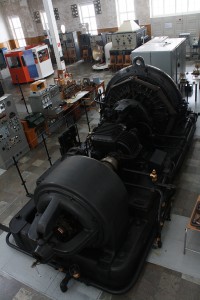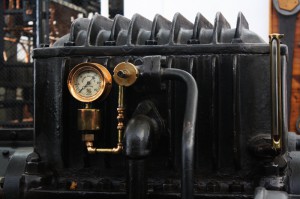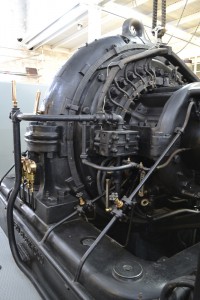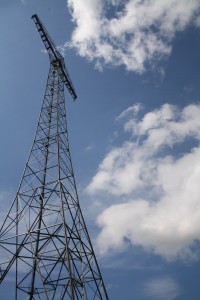|
|
T
|
|
|
|
The liquid resistorsTwo liquid resistors are used as variable rotor resistances for the Alexanderson unit’s electric motor. A third liquid resistor is available as a spare unit. The liquid resistors consist of approx. 2 m high containers, in which there are stainless steel electrodes. Water mixed with sodium carbonate (baking soda) flows in the resistors and the liquid level is regulated by motor-driven “dampers” that are controlled from the control panel. This regulates the resistance between the steel electrodes and thus the rotor resistance is controlled. The heat that forms in the liquid is cooled off via a heat exchanger to the station’s cooling water system. The one liquid resistor is used to regulate the speed of the Alexanderson alternator and thus the frequency of the station when no signal is being transmitted. The second fluid resistor is connected in parallel with the first when the signal is sent and thus reduces the rotor resistance to give the electric motor more torque, so that the speed is maintained constant even when the generator is loaded. |
|






